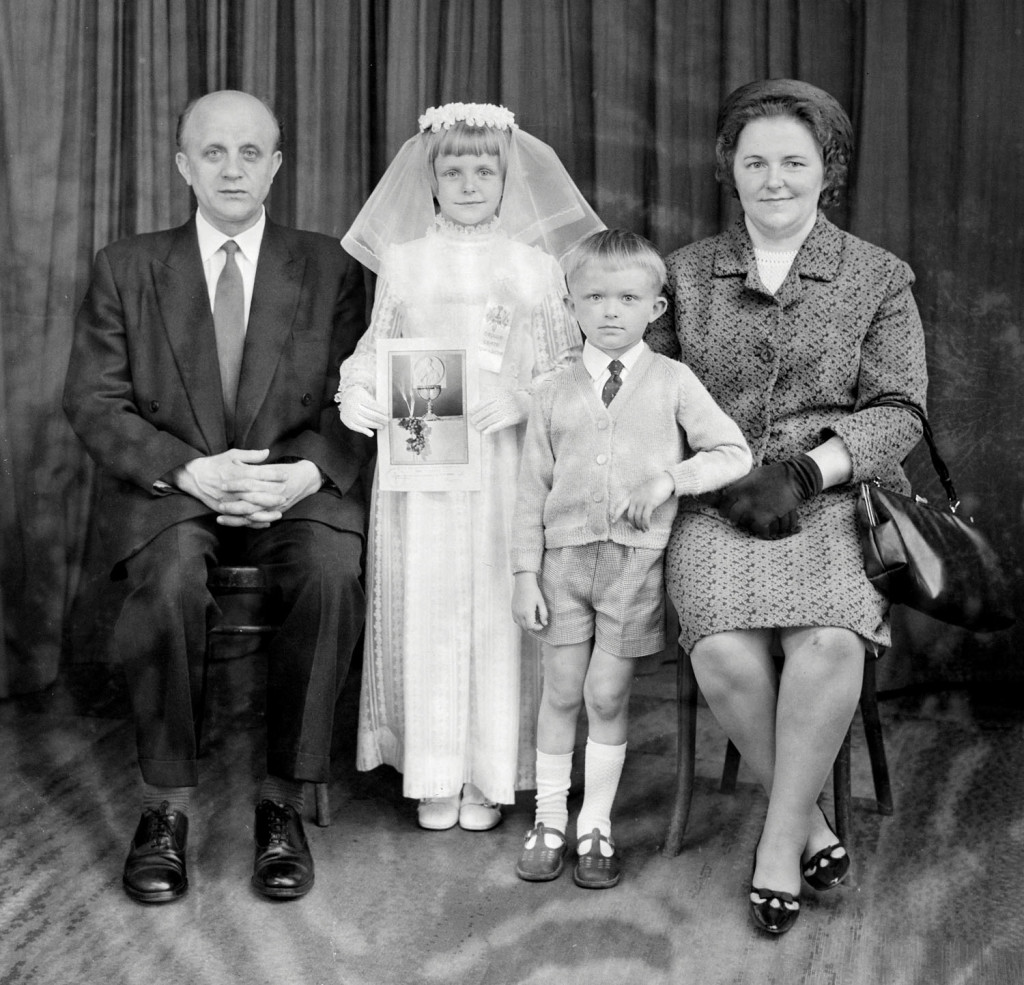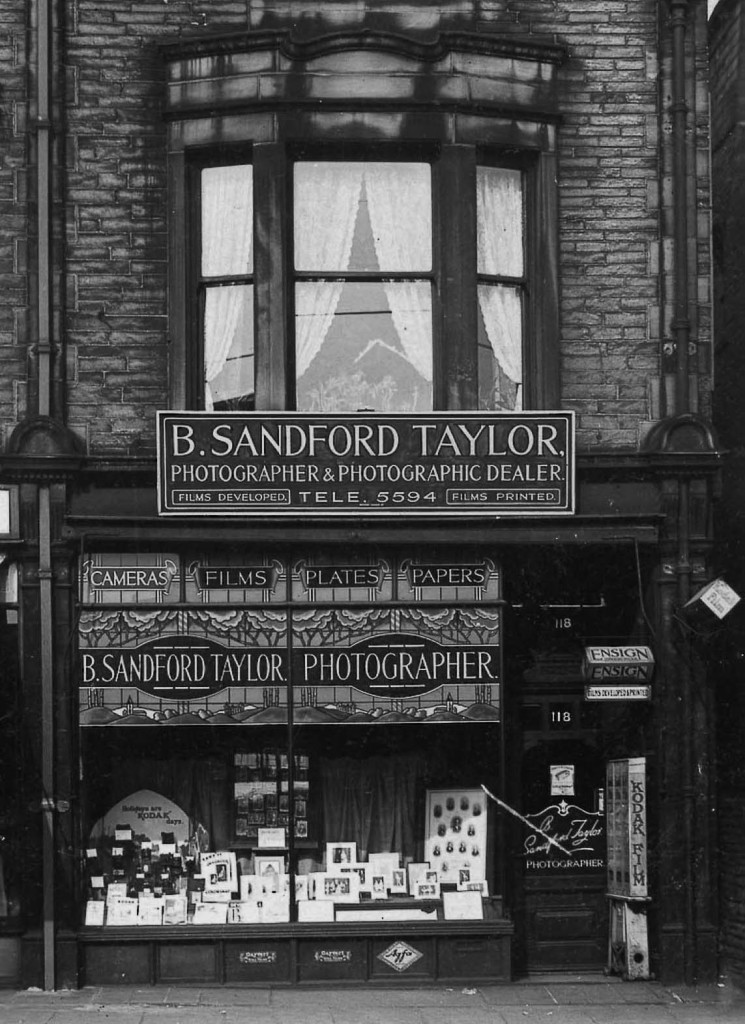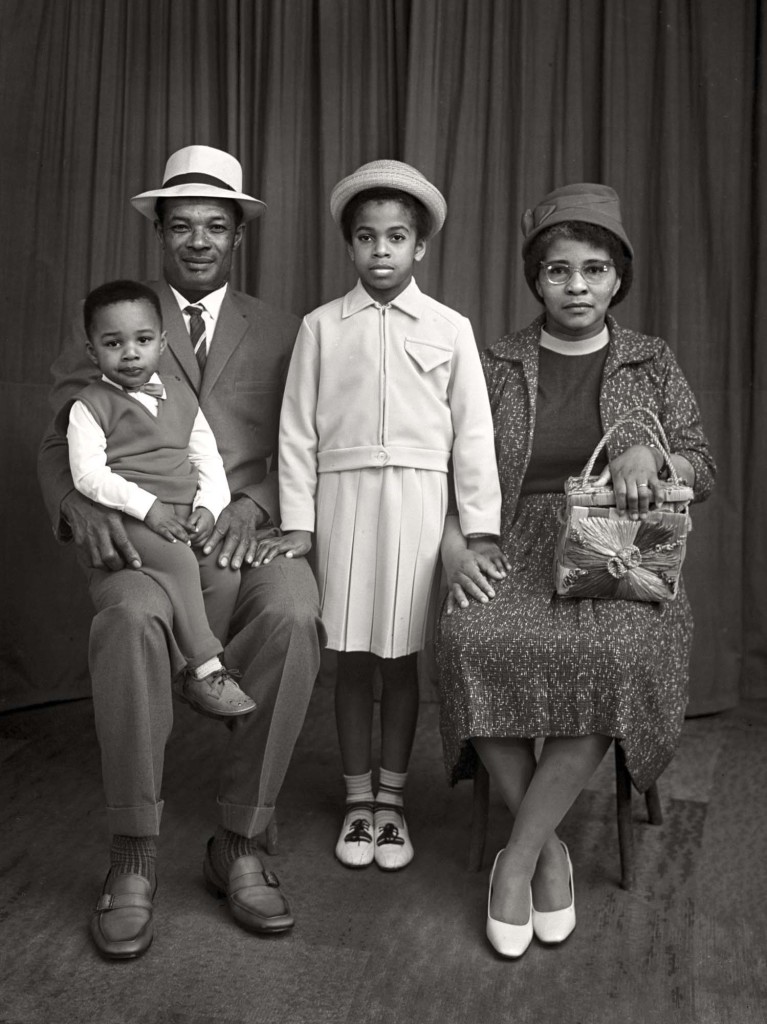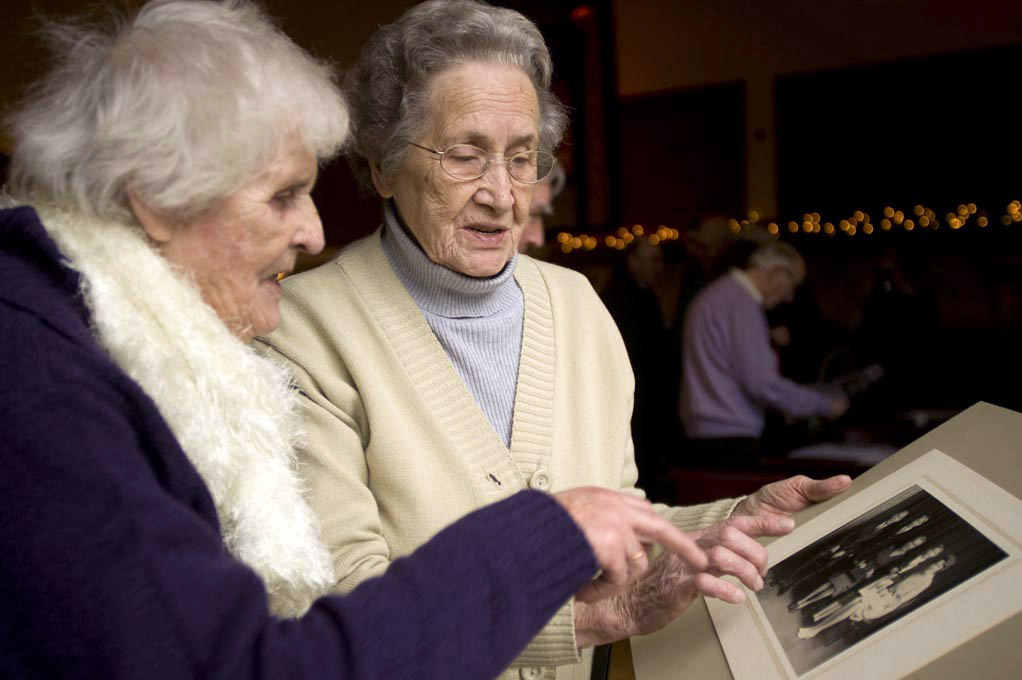A guest post by Tim Smith
A unique archive of photographs which records the changing face of a British industrial city through the 20th century can be seen in a BBC documentary on iPlayer during Refugee Week.
When the Belle Vue Studio opened in 1926 on Manningham Lane in Bradford, the photographer, Benjamin Sanford Taylor, installed his old Victorian glass-plate camera on a tripod at one end of his studio. At the other end of the room was the spot for his customers who, lit by daylight falling through a glass wall and roof, faced a lens which never moved until the business closed in 1975.
The studio remained unchanged for 50 years, but the city outside was transformed. People had always come from other parts of the UK and Ireland to work in Bradford, the centre of the world’s woollen textiles industry, but from the 1940s onwards increasingly large numbers came from further afield.
Many of these migrants settled in inner-city Manningham, where cheap housing and jobs were plentiful. The Belle Vue Studio was ideally located for them and it produced the old-fashioned style of picture that they were familiar with from their homelands. It became the studio to visit for these new arrivals.

A Bradford Ukrainian family pose for a first communion picture during the 1960s. Many of Bradford’s Ukrainians started families later in life as their youth was spent during wartime and in refugee camps.
This is reflected in the identities of the subjects of the photographs. Before the Second World War (1939–45) the faces in the pictures almost all belonged to white British and Irish people. This changed dramatically after the war, with the photographs revealing a much greater diversity among the customers.
The first new arrivals, from the late 1940s onwards, were political refugees from Poland, Ukraine and other parts of Eastern Europe. Displaced by the War they were unable to return home due to the post-war settlements that made their motherlands part of the Soviet Union, or had Communist rule imposed and controlled by Moscow. During the 1950s families from the Caribbean and groups of single men from the Asian sub-continent then appear in the frame. In the 1960s these men were joined by their families, and new generations of children born in Bradford can be seen in the photographs.
Whether they were forced to move as refugees or arrived as economic migrants all communities came seeking a better life in Bradford, working mainly in the textile industry, in the newly created NHS, in the expanded public transport networks, or as factory workers in other industries.
I first encountered these extraordinary photographs shortly after the Belle Vue Studio was sold in 1986. The photographer Tony Walker, who had bought the business when Sanford Taylor retired in the 1950s, had closed the studio when his wife fell ill. For a decade thousands of glass-plate negatives lay forgotten in a dark, damp cellar. After the death of his wife Tony Walker found a buyer for the building, and he began filling a skip outside with what he thought was the studio’s redundant archive.
Luckily, the new owner saw some of the pictures, realised their significance and forbade Tony to throw away any more. He brought a small number to the Bradford Museums for whom I was then working, leading a team creating a photographic archive on the local area.
Many of the pictures had been destroyed, but we acquired those that survived, more than 17,000 glass-plate negatives stored in damp and dirty shoe boxes. After much painstaking work they are now housed in stable, archival conditions, forming a rare and invaluable record of Bradford at a time of extraordinary change. As a result of a collaboration between Bradford Museums and the city’s National Science and Media Museum the majority of these negatives have now been digitised.
As part of the Bradford’s National Museum Project, which is run by the University of Leeds and aims to foster better connections between the National Museum and local partners and communities, we ran a series of pop-up events around the city, using the photos as a catalyst for seeking out the stories of those who visited the Belle Vue Studio more than forty years ago. Many of these stories, including those of Bradford’s large Ukrainian community who first arrived as post-war refugees, are shared in the television programme Hidden Histories: The Lost Portraits of Bradford, which is available now on BBC iPlayer until 1st July 2020.




